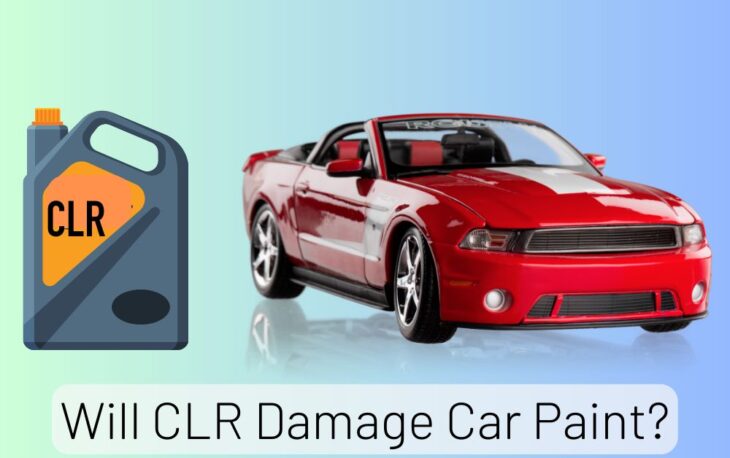CLR® is a powerful cleaning solution popularly used to remove tough stains and buildup in various household items. However, one question often arises whether CLR® can damage car paint. Cars are a significant investment, and their appearance is important to many people.
Thus, it is understandable that car owners are concerned about using products that may harm their paint. So, Will CLR damage car paint?
Yes, as for its effect on car paint, CLR is not specifically formulated for use on automotive paint finishes and using it on your car’s painted surface could potentially cause damage. The chemicals in CLR can be abrasive and may cause discoloration, dullness, or even etch the paint if not used properly or left on the surface for too long.
CLR (Calcium, Lime, and Rust remover) is a powerful cleaner designed to remove tough stains and buildup caused by minerals such as calcium, lime, and rust. While it may be effective in cleaning various surfaces, it is not recommended for use on car paint.
Key Takeaways:
- CLR contains acidic chemicals that can potentially damage your car’s clear coat and paint.
- If you accidentally get CLR on your car’s surface, it is essential to rinse it off immediately with water to prevent any chemical reactions that may cause damage.
- To maintain the shine and integrity of your car’s paint, it is best to use car-specific cleaning products that are safe for use on automotive paint surfaces.
- Always follow the manufacturer’s instructions and test a small, inconspicuous area before applying any cleaning product to your car’s paint to ensure compatibility and avoid unwanted effects.
Can I use CLR on my car to remove rust?
No, while CLR is designed to remove rust from various surfaces, it is not specifically formulated for automotive applications. Using CLR on your car to remove rust could potentially cause damage to the paint or other surfaces, as its chemical composition may be too harsh for automotive finishes.
If you need to remove rust from your car, it is recommended to use a rust remover specifically designed for automotive use. These products, including paint, chrome, and metal, are generally milder and safer for use on car surfaces.
Cons of using CLR on car-painted surfaces
- The chemicals in CLR can be harsh and may cause discoloration, dullness, or even etch the paint if not used properly or left on the surface for too long.
- CLR’s chemical composition may cause damage to unprotected metal parts or contribute to corrosion over time.
- It may cause damage or degradation to rubber seals, plastic trim, and other non-metal components on your car if it comes into contact with them.
- Improper rinsing after application could leave residue on the paint, which may be difficult to remove and could affect the paint’s appearance or longevity.
- It is not specifically designed for automotive use, and its compatibility with various car paint finishes, and materials is not guaranteed.
What surfaces should I not use CLR on?
- Wood
- Painted surfaces
- Aluminum, Brass, Copper
- Marble, Granite, and Travertine.
- Colored Grout
- Textiles, Fabrics, and Carpets.
- Wallpaper
You May Also Like To Read:
Affiliate Disclosure: Cars Escort is a participant in the Amazon Services LLC Associates Program. As an Amazon Associate, we earn from qualifying purchases made through affiliate links on our site. Read Our Disclaimer .

